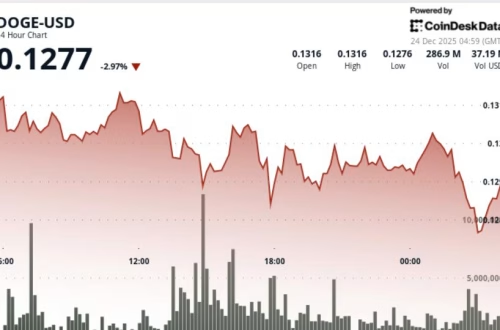Understanding Automated Market Makers (AMMs) in DeFi
Summary:
Automated Market Makers (AMMs) are decentralized finance (DeFi) protocols that enable trustless trading of cryptocurrencies using liquidity pools rather than traditional order books. By leveraging smart contracts, AMMs allow users to swap tokens without intermediaries, enhancing accessibility and efficiency in DeFi trading. These protocols democratize market-making by rewarding liquidity providers (LPs) with fees and incentives. Understanding AMMs is crucial for anyone engaging in DeFi, as they underpin decentralized exchanges (DEXs) like Uniswap and Curve while reshaping how liquidity is managed in blockchain ecosystems.
What This Means for You:
- Lower Barriers to Trading: AMMs eliminate the need for intermediaries, letting you trade directly from your wallet. This reduces fees and opens DeFi to anyone with an internet connection.
- Opportunity to Earn Passive Income: By supplying tokens to liquidity pools, you can earn a share of trading fees. Research impermanent loss and diversify your liquidity positions to mitigate risks.
- Early Adoption Advantage: New AMM platforms often offer lucrative incentives for early LPs. Stay informed about emerging protocols but assess risks before committing funds.
- Future Outlook or Warning: While AMMs innovate financial markets, they face challenges like impermanent loss and smart contract exploits. Layer 2 solutions and dynamic fee structures may shape future iterations.
Explained: Understanding Automated Market Makers (AMMs) in DeFi
What Are AMMs?
Automated Market Makers (AMMs) are decentralized protocols that facilitate token swaps through algorithmic pricing mechanisms instead of order books. Unlike traditional exchanges, where buyers and sellers place bids and asks, AMMs rely on liquidity pools—collections of tokens locked in smart contracts that enable instant trades based on predefined mathematical formulas (e.g., Uniswap’s x*y=k invariant).
Key Mechanisms Behind AMMs
The core of an AMM is its pricing model. The most common is the Constant Product Market Maker (CPMM), used by Uniswap, where the product of two token reserves remains constant (x * y = k). This ensures liquidity but can lead to slippage for large trades. More advanced models like Curve’s StableSwap optimize for low-slippage trades between similarly priced assets (e.g., stablecoins).
Roles in an AMM Ecosystem
- Traders: Swap tokens directly from their wallets using liquidity pools instead of counterparties.
- Liquidity Providers (LPs): Deposit token pairs into pools to earn fees (typically 0.01%–1% per trade).
- Protocols: Govern fee structures, incentives, and upgrades via decentralized governance tokens (e.g., UNI).
Strengths of AMMs
- Permissionless Trading: No KYC or centralized intermediaries required.
- 24/7 Liquidity: Pools are always available, unlike order-book exchanges reliant on market makers.
- Incentivized Participation: LPs earn passive income and often receive additional token rewards.
Weaknesses and Risks
- Impermanent Loss: LPs may lose value if the price ratio of pooled tokens diverges significantly.
- Slippage: Large trades can dramatically shift token prices within pools.
- Smart Contract Risks: Bugs or exploits (e.g., flash loan attacks) can drain liquidity.
Popular AMM Protocols
- Uniswap: The pioneer of CPMM, supporting ERC-20 token swaps.
- SushiSwap: A Uniswap fork with additional features like yield farming.
- Curve Finance: Specializes in stablecoin swaps with minimal slippage.
- Balancer: Allows custom pool configurations with multiple tokens and weights.
Future Innovations
AMMs are evolving with dynamic fees, concentrated liquidity (e.g., Uniswap V3), and cross-chain interoperability. Layer 2 solutions like Arbitrum and Optimism are reducing Ethereum gas fees, making AMMs more scalable.
People Also Ask About:
- How do AMMs determine token prices? Prices are algorithmically set based on the ratio of tokens in a liquidity pool. For example, in Uniswap’s CPMM, the price of Token A relative to Token B is the ratio of their reserves (Reserve B / Reserve A).
- What is impermanent loss, and how can I avoid it? Impermanent loss occurs when the price of pooled tokens changes compared to when they were deposited. To mitigate, provide liquidity in stablecoin pairs or use protocols like Bancor that offer insurance against losses.
- Are AMMs safe to use? While AMMs are generally secure, risks include smart contract exploits and rug pulls. Stick to audited platforms like Uniswap and avoid unaudited or anonymous projects.
- Can I make money as a liquidity provider? Yes, but profitability depends on trading volume, fee structures, and market volatility. Research APYs (Annual Percentage Yields) and balance rewards against risks.
Expert Opinion:
AMMs have revolutionized DeFi by democratizing market-making, but users must understand their underlying risks. Impermanent loss remains a critical drawback, though newer models aim to address it. As DeFi matures, hybrid solutions combining AMMs with order-book elements or oracle-based pricing could dominate. Always prioritize security by using reputable platforms and diversifying liquidity positions.
Extra Information:
- Uniswap Documentation: A deep dive into how Uniswap’s AMM model works, including technical details for developers.
- Finematics: Impermanent Loss Guide: A beginner-friendly explanation of impermanent loss with visual examples.
Related Key Terms:
- How liquidity pools work in decentralized exchanges
- Best AMM protocols for yield farming in 2023
- Understanding impermanent loss in DeFi liquidity provision
- Comparing Uniswap vs. Curve for stablecoin trading
- Optimizing gas fees for AMM trades on Ethereum
#Automated #Market #Makers #AMMs #DeFi #Explained #Work #Matter
Featured image generated by Dall-E 3





